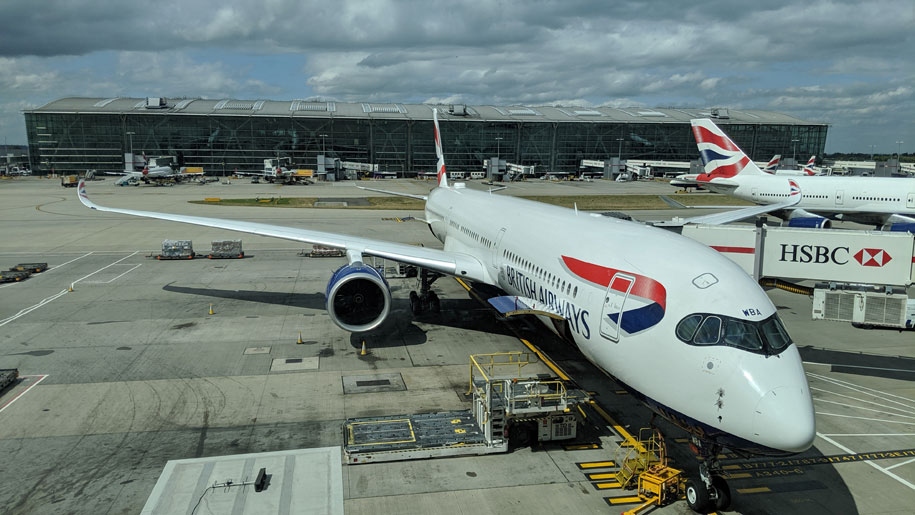Controlling the position of the seat is easy, with a choice of three pre-sets (take off/ landing, reclined and bed) and then a touch screen that allows more minor adjustments. The armrest can go up and down on one side, depending on personal preference.
The doors to the suites are all secured open for take-off, and then cabin crew come round to release them so you have the option of shutting them. The doors shut almost completely – you can fit a finger in the gap but not much else, and I was told the gap is to stop them rattling, which makes sense.
As you’d expect from an A350 there’s plenty of light in the cabin, and the overhead lockers have been designed so there’s plenty of headroom. As a result the seat doesn’t feel claustrophobic at all.
The walls and door of the seat are such that even when sitting upright, I would have struggled to make eye contract with anyone even while turning my head and attempting it, yet they are not so high as to make you feel closed in. In fact, for people in the centre seat, the overhead cabins are so deep that if you are not tall you may end up having to stand on the arm rest to get your bags from these overhead bins.
The IFE screen is a good size, and works both by touching it or using the handheld. It is close enough that you can operate the touchscreen without leaning forward too much, but I found the screen to be not very responsive and had to press quite hard to get it to move around the menu, so I used the handheld. There is wifi on board, but for our flight this was offered on a complimentary basis, which meant everyone tried to use it and I couldn’t get on it at all.
The table is recessed beneath the IFE and BA is proud of the fact that it goes under the screen completely, giving you more space when you are not using it and meaning your knees don’t hit the edge of it when you are reclined and eating. You can see it in a recessed version below.


